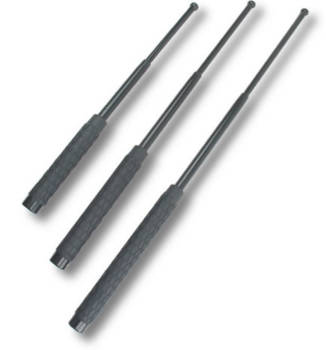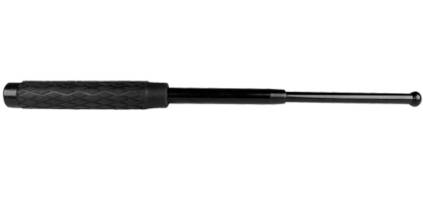Impact Weapons for Protection

What Are Impact Weapons?
Impact weapons are blunt-force self-defense tools designed to incapacitate an attacker without requiring lethal force. These weapons rely on strikes rather than cutting or piercing, making them effective, durable, and easy to use for self-protection.
Common impact weapons include:
- Batons – Expandable or fixed, commonly used by law enforcement.
- Tonfas – Side-handled sticks for blocking and striking.
- Kubotans & Tactical Pens – Small, discreet tools designed for pressure-point defense.
Common Impact Weapon - Telescopic Baton
Why Choose an Impact Weapon?
- Non-lethal deterrent – Can stop an attacker without causing fatal injuries.
- Simple to use – No special training required for basic effectiveness.
- Highly portable – Many options are lightweight and easy to conceal.
- Legal in most areas – Unlike knives or firearms, impact weapons are often permitted for personal carry (check your local laws).
Best Impact Weapons for Self-Defense
1. Expandable Batons
A collapsible baton is one of the most popular impact weapons for self-defense. These batons extend with a flick of the wrist and lock into place, giving you extra reach and striking power.
✅ Best For: Personal security, home defense, security personnel
✦ Product Example: Steel Telescopic Baton
2. Tactical Pens
Tactical pens look like regular writing instruments but are built with a hardened tip, allowing them to be used for striking and pressure point control.
✅ Best For: Everyday carry, discreet protection, emergency glass-breaking
✦ Product Example: Tactical Pen for Self-Defense
Tactical Pen as an Impact Weapon
3. Kubotans
A Kubotan is a small, keychain-sized impact tool designed for close-quarters self-defense. It’s used for pressure point manipulation and joint locks, making it effective with minimal force.
✅ Best For: Easy carry, women’s self-defense, keychain attachment
✦ Product Example: Kubotan Self-Defense Tool
How to Use an Impact Weapon for Self-Defense
When using an impact weapon, the goal is to disable an attacker long enough to escape safely. Here are some key techniques:
- Target sensitive areas – Strike the attacker’s wrists, knees, ribs, or head to cause maximum pain and immobilization.
- Maintain a defensive stance – Keep your body balanced and ready to react.
- Practice quick deployment – If carrying a baton or kubotan, be able to access and deploy it in under two seconds.
- Know your legal limitations – Self-defense laws vary by location. Understand where and how you can legally use your weapon.
Legality of Impact Weapons
Laws regarding impact weapons differ by state and country. Some areas allow open carry, while others restrict batons and expandable weapons. Before purchasing, check your local self-defense laws to ensure compliance.
Common restrictions include:
❌ Prohibited in certain public spaces (e.g., schools, government buildings)
❌ Limits on carrying in certain states (e.g., California, New York)
❌ Misuse can lead to legal consequences (only use for self-defense)
Final Thoughts: Choosing the Best Impact Weapon
When selecting a self-defense tool, consider portability, effectiveness, and legality. For everyday carry, a tactical pen or kubotan is a solid choice. If you need extra reach and stopping power, an expandable baton may be the better option.
Shop Self-Defense Weapons Today
Looking for a reliable impact weapon? Browse our selection of batons, tactical pens, and kubotans at TBOTECH for the best protection tools.
Add your comment now!
Post CommentRecent posts
-
06/27/2025Personal Safety Devices for Women
-
06/27/2025Can You Bring Pepper Spray on a Plane?
-
06/27/2025Are Butterfly Knives Illegal?


